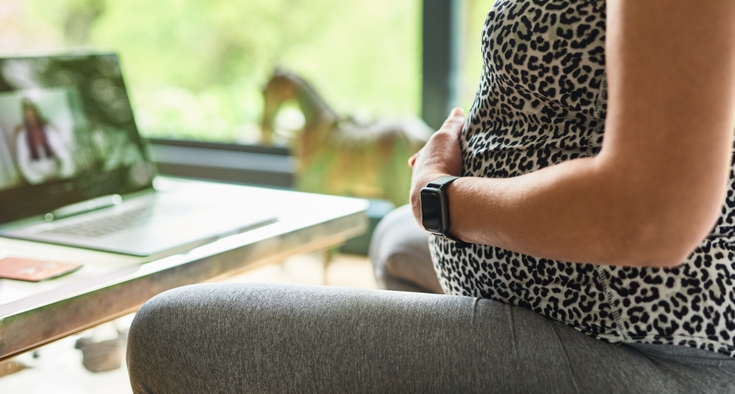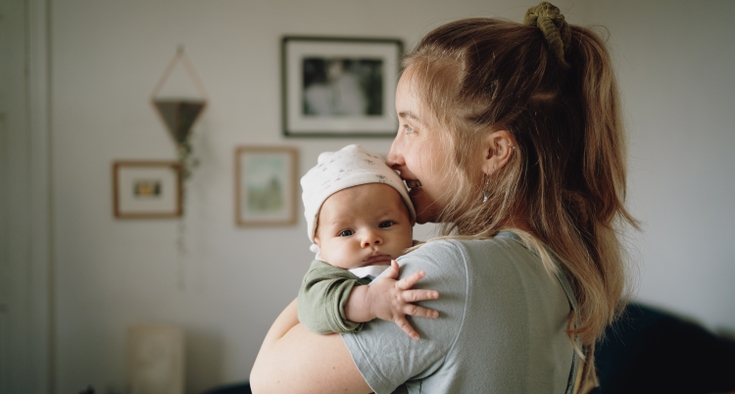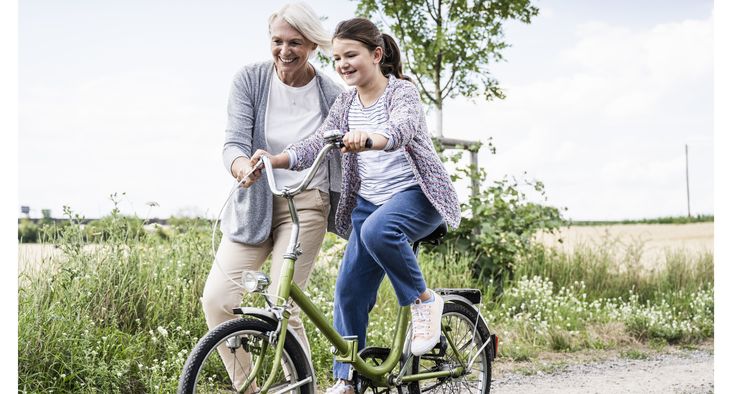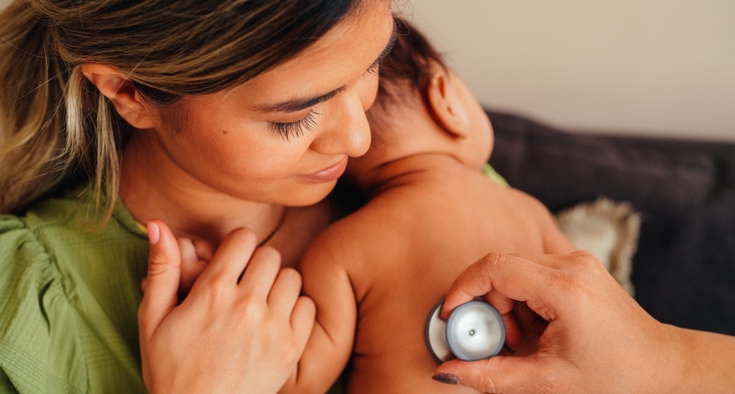As an expectant or new parent, it’s overwhelming to parse through the endless products you could buy to monitor, clean up after, entertain and venture out with your baby. Do you really need a $300 baby monitor that tracks pulse rate and oxygen levels? (Short answer: nope.) What about bottle sanitizers? (Keep reading.)
I’ve been navigating motherhood since October of 2024 and I continue to bump into questions about what’s helpful and what’s not. But I’ve compiled a short list of popular products that I have found are indeed necessary to keep my baby healthy, safe and happy. Dr. Megan Collins, a mother and pediatrician with Novant Health Dilworth Pediatrics, weighed in, too.
Find exceptional pediatric care for your family.
As for product safety, be sure to check that your product is certified by the Baby Safety Alliance (formerly known as the Juvenile Products Manufacturers Association), so you know it meets safe sleep standards. Also fill out product registration cards so you’ll be notified in the event that an item gets recalled for safety concerns.
Popular baby gear that feels necessary
Jumper/bouncer
Often called “activity centers,” these playsets typically include a fabric sling that supports a baby’s hips while they bounce, jump or stand upright and play with toys fixed to the structure.
Why I find it necessary: When my baby started to sit up on her own, she aged out of the little mechanical swing I set her in while I washed bottles, etc. She naturally became more interested in standing and jumping positions, too. A bouncer gives her a sense of freedom to safely play while I can use two hands for household tasks.

Helpful health notes: Contrary to the slew of criticism online from some people claiming to have healthcare credentials, these devices aren’t likely to ruin a child’s development with hip dysplasia (when the hip bones don’t fit properly into the hip joint), Collins said.
“In moderation, it’s great,” she said. “Your baby may only be comfortable in a bouncer for 15 minutes at a time. Keep in mind that when you have babies in different positions, they’re going to work on different muscles. If they’re spending a lot of time on their back or upright for example, it helps to counter that with tummy time.”
Pack and play
These light and foldable portable cribs double as little play yards whether you’re traveling with your baby or just moving around your house. (Don’t forget to buy fitted sheets!)
Why I find it necessary: I’ve taken several trips with my baby and a pack and play is so quick and easy to unfold, fold back up (once you get the hang of it) and store in the back of an SUV. It’s an easy, safe space for sleep while on the go.
Helpful health notes: “It’s also a safe spot to put your baby when you’re doing things like cooking in the kitchen, where you don’t want to be baby-wearing because hot water can splash up,” Collins said. “These are also great as they follow the American Academy of Pediatrics safe sleep guidelines. That is, they provide a flat, firm surface for babies to sleep. I have many families who also use their pack and play as their child’s full-time home crib, which is great.”
Sunshades for strollers and car windows
While many strollers and car seats include sun shades, they’re typically not long enough to block out the sun as it changes angles throughout the day. You can add sun shades to car windows and extended sun shades to strollers.
Why I find these necessary: We’re out and about a lot, from long walks with the stroller at all hours to errands or drives across town to visit family. Shades help prevent sunburn while we’re on the move.
Helpful health notes: “If you’re spending more than 10 minutes in the sun a day, consider sun shades for strollers,” Collins said. “Baby skin is more fragile and sensitive, especially before six months. Also consider full-coverage clothes all the way up the arms and legs, as well as a sun hat.” And unfortunately, while windshields are usually treated to provide UV protection, car side windows don’t necessarily block those UV rays. Sun shades in the car can offer that protection.
Wearable baby carriers
These devices come in many shapes, sizes and strap variations to let you comfortably carry your baby against your body while keeping your hands mostly free.
Why I find it necessary: Especially in the early days of infancy when my baby preferred to be held more often than not, wearing her in a baby carrier was the only way I could get anything done, from walking the dog to getting her to nap. I still use it for daily vacuuming and the occasional nap.
Helpful health notes: “Make sure to position your baby’s knees above their hips, in the ‘M-position,’ and your baby’s neck is straight, not curled down,” Collins said. “Babies may be comfortable spending hours at a time in a carrier, so good posture is important. Also, make sure the carrier straps are tight enough that your baby can’t fall out, and make sure their head is kissable and their nose has room to breathe through.”
Car seat adapter for stroller
Car seat adapters enable you to pop the car seat out of the car seat adapter in the car and pop it straight into the car seat adapter in a stroller.
Why I find it necessary: After 6 months, babies can be fully upright in a stroller if they have proper neck strength. Before that time, an adapter made transitions from the car to the stroller so much easier for every outing. I used one for both a jogger stroller when I needed exercise and a lightweight travel stroller when I needed to navigate the grocery store. Over time, I swapped the adapter in the jogger stroller for a special infant insert that offered similar neck and spine support.
Helpful health notes: “Car seat adapters are important before six months of age because babies still need head and neck support – most infants develop good head/neck control around 6 months, at which time they’ll likely be ready to fit in a stroller without an adapter,” Collins said.
Popular baby gear that’s less necessary (but many people could find helpful)
Bath thermometer
Why you don’t need it: “Your elbow and wrist are just fine for checking the temperature of bathwater,” Collins said. “Use common sense and check for comfortably lukewarm-to-warm water.”
Bottle warmer
Why you don’t need it: “Your baby doesn’t necessarily need warm milk to thrive, and some even like it cold,” Collins said. “You can warm bottles just by running them under warm water. It is not safe to warm bottles in the microwave, as microwaves warm liquids unevenly and can cause accidental burns.”
Sound machine
Why you don’t need it: “A lot of babies are very hard sleepers at the beginning, to the point where you can often vacuum around them,” Collins said. “But if you find they have trouble staying asleep later on and a sound machine helps, great.”
Bottle sanitizer
Why you don’t need it: “After the first use,
Humidifier
Why you don’t need it: “If you’re trying to clear up congestion, it’s probably more effective to run a hot shower to steam up the bathroom, and then sit in the bathroom with your baby,” Collins said.
Ultimately, there are so many product considerations to make when navigating those early months with your baby. Some products are more necessary for their happiness and health (and yours, too). Don’t feel pressured to buy everything! And when in doubt, you can always get your pediatrician’s opinion.













